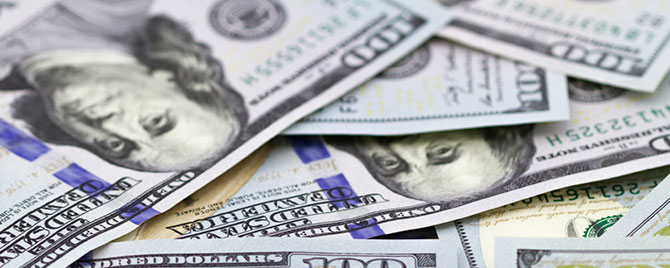The U.S. Treasury’s Bureau of Engraving and Printing (BEP) prints the cash you get at ATMs and your local bank. So what’s the Federal Reserve’s role in getting that currency into circulation and your hands?
As the issuing authority for U.S. currency (in the form of Federal Reserve notes), the Federal Reserve Board places an annual currency print order with the BEP. The BEP then holds new currency notes in its designated Federal Reserve vault until the notes are needed.
90% of New Notes Replace Old Cash
One reason for issuing new Federal Reserve notes is to replace notes that were removed from circulation because they were too damaged or soiled for recirculation. In fact, nearly 90 percent of notes delivered each year replace notes that have been taken out of circulation and destroyed. When the Board is ready to issue the Federal Reserve notes, the currency is shipped from the BEP to regional Federal Reserve Banks across the country, including the Federal Reserve offices that serve the 12th District in San Francisco, Los Angeles, Phoenix, Salt Lake City, and Seattle.
The Bank’s Bank
As your commercial bank orders cash from the Federal Reserve to meet local demand, Reserve Banks fulfill the currency orders. That’s when currency makes its way into circulation. Until the Federal Reserve Board issues currency from the BEP to a Federal Reserve Bank, new currency printed at the BEP is literally just pieces of paper. Once it’s issued, it becomes lawful money.
For more about how cash makes it into your day-to-day life, visit our Cash Lifecycle page and watch the How does U.S. currency get into circulation? video on the Board’s NewMoney.gov website.
The views expressed here do not necessarily reflect the views of the management of the Federal Reserve Bank of San Francisco or of the Board of Governors of the Federal Reserve System.
